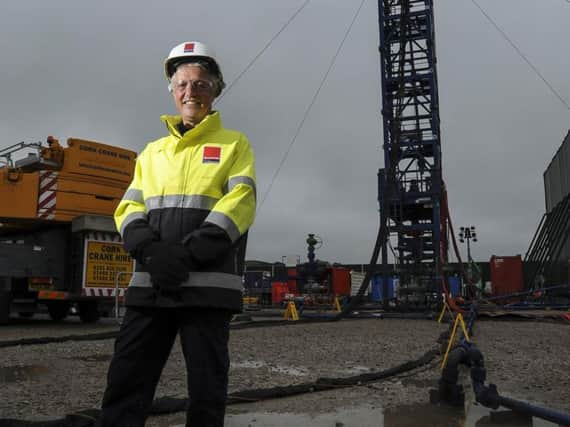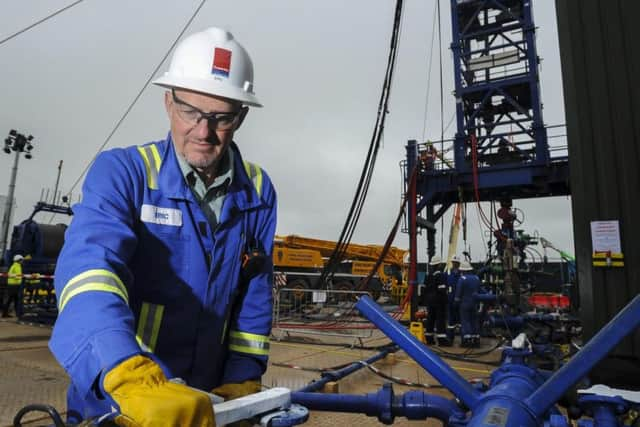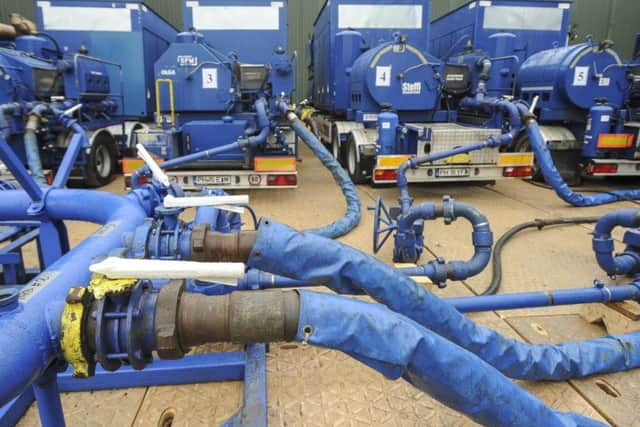Fylde in the spotlight in a crucial week for the battle over fracking


The shale gas exploration company has announced it is now poised to frack in the next week to test how the gas flows from inside the shale rock 2,000 metres beneath the surface in the Bowland shale layer.
To mark the occasion members of the media were allowed into the high security site, with its 10 foot high wall and electrified fence to keep out protesters, to see the equipment the engineers would be using over the coming weeks.
Advertisement
Hide AdAdvertisement
Hide AdMr Egan conceded that all eyes would be on this corner of Lancashire to see if extracting the gas could be done safely and economically given that the project had cost $50m in investment so far.


He said: “It is exciting. We know the rocks are very good, we know there’s a lot of gas down there, the quality of the rock is excellent and we have a good view of the extent of the shale.
“What we don’t know is what the flow rate of the gas will be and how that flow declines over time.”
He said if the testing proved successful the company would be looking for more investors to get behind the subsequent stage of fracking – the production phase – which would need another £100m to get started and begin to reap the huge rewards from the gas.
Advertisement
Hide AdAdvertisement
Hide AdAt the site, the huge drilling rig has been taken away and replaced with a coil tubing tower which passes the flexible pipe into the two wells Cuadrilla has drilled deep under the site.


A reel holding 3kn of the tubing stands nearby ready to be fed into the well.
At the end of the tubing will be a specialised tool which fits into the fracking sleeves in the shale rock.
It opens the narrow slits in the sleeves through which the fracking fluid - millions of gallons of water, sand and chemicals is pumped under high pressure to fracture the soft shale and allow the gas to flow back up the well bore to the surface.
Advertisement
Hide AdAdvertisement
Hide AdFour huge diesel powered pumps stand nearby to push the fluid into the ground, while next to them are the tall white silos containing the fine sand needed to get in the cracks in the shale and hold them open to let the gas flow.
The pumps are covered with sound insulating boxes and are surrounded on three sides by high sound barrier walls.
Laura Hughes commercial and project director said the team were keen to get on and start the testing.
She said: “It is very exciting. We know people have concerns but we are operating under strict regulation.
Advertisement
Hide AdAdvertisement
Hide Ad“If there are any tremors close to the limit of 0.5 local measurement (which equates to the Richter scale with compensation made for local seismic conditions) then the operation is stopped and investigations made as to what might be going on.”
She said that although people had concerns about the chemicals in the fluid , most of them could be bought over the counter and were in small concentrations.
Eric Vaughan, hydraulic fracturing manager, said the 2,000 plus horsepower diesel engine pumps would not cause enough noise to disturb neighbours thanks to the sound baffles in place.
“We know there a lot of gas down there but no-one knows if we can get it out economically. This is the next process.
Advertisement
Hide AdAdvertisement
Hide Ad"We have been waiting for this for a long time, the planning process and studies have taken a long time, we are excited to be able to show what we can do and show it works.
“The chance of contaminating the water table is practically nil, the noise should be fine the pumps are actually running right now and we are talking next to them. They will get a little bit louder as the rev up during the actual pumping but with the noise walls and monitoring all around we are confident they will be no problem.”
The last fracking operation carried out at Preese Hall caused two earth tremors and alerted the wider public to the potential problems fracking could bring, the next fracking operation is set to be crucial for the future of the industry across the country.